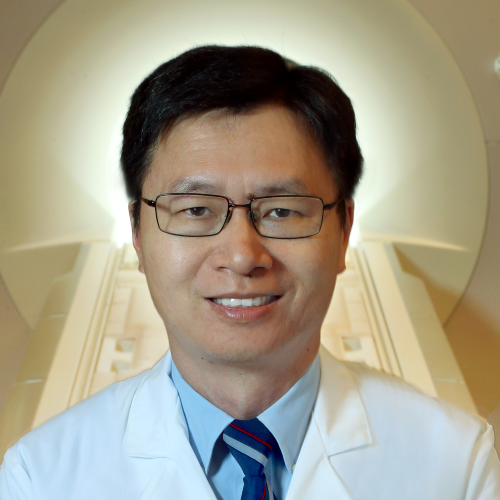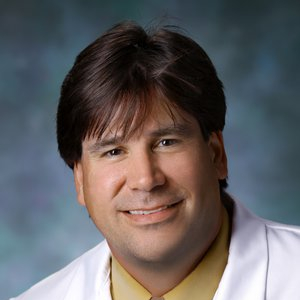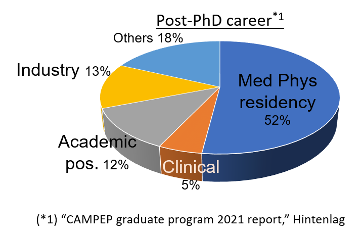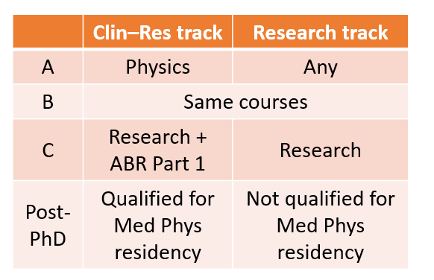PhD Medical Physics
What is Medical Physics?
Medical physicists are professionals with an MS or PhD degree, specializing in the technical and clinical aspects of diagnosis and therapy. They work alongside MDs and technologists, contributing to technical areas such as imaging, radiation therapy, and radiation safety. The field is governed by organizations like the American Association of Physicists in Medicine (AAPM), the American Board of Radiology (ABR), and CAMPEP (Commission on Accreditation of Medical Physics Educational Programs). The Medical Physics field benefits significantly from NIH funding in radiation and radiological sciences, placing JHU in a competitive position among institutions. For application, apply now (Application Management).
PhD in Medical Physics at Johns Hopkins

The Medical Physics PhD program at Johns Hopkins University offers a five-year graduate degree designed for full-time students pursuing careers in medical physics. This program features a dual-track system: one for students with a CAMPEP-approved background in physics or physical sciences and one for non-CAMPEP students. The curriculum requires the completion of 38 credits and a research thesis, with students trained to excel as researchers, certified clinical professionals, or industry experts. The program is a joint effort between the Radiology and Radiation Oncology departments, fostering comprehensive educational experience. Applications can be found here.
Leadership
-
Ken Taguchi
Co-Director of PhD Program
Professor
ktaguchi@jhmi.edu
Lab: http://kulab.jhmi.edu/
-
Kai Ding
Co-Director of PhD Program
Associate Professor
kding1@jhmi.edu
Lab: http://dinglab.jh.edu/
-
Yong Du
PhD Program Steering Committee Member
Associate Professor
duyong@jhu.edu
Lab: http://QIB.jhmi.edu/
-
Hanzhang Lu
PhD Program Steering Committee Member
Professor
hlu3@jhmi.edu
Lab: https://lulab.jhmi.edu/
-
Todd McNutt
PhD Program Steering Committee Member
Associate Professor
Director of Clinical Informatics
tmcnutt1@jhmi.edu
Medical Physics Career

The medical physics career path typically starts with completing a CAMPEP-accredited graduate program (MS or PhD) or certificate program (post-PhD). After this education, candidates are eligible to take the American Board of Radiology (ABR) Part I exam. Successful candidates then move on to residency training, which usually lasts for 2-3 years. Following residency, individuals work as clinical medical physicists and must pass the ABR Part II and Part III exams, taking about 1-2 years. Once these exams are completed, they achieve ABR certification as a medical physicist. Certified medical physicists must continue with Maintenance of Certification (MOC) and lifelong learning to stay current in their field. Since 2012, the ABR Part I exam has required CAMPEP-accredited education, and since 2014, the ABR Part II exam requires CAMPEP residency training.
Why Medical Physics PhD

The Medical Physics PhD program is designed for individuals aiming to pursue research-focused careers in the field. It offers a number of benefits, including a significantly better acceptance rate for Medical Physics residency programs compared to other pathways (96% vs 78%). The PhD program provides the necessary qualifications for roles in top-tier academic and clinical institutions and aims to cultivate international leaders in the medical physics community. The program also allows students to engage in extensive research experiences. Tuition is waived, and students receive a stipend provided by the principal investigator (PI). Upon completion, graduates often pursue careers in medical physics residency programs (52%), industry positions (13%), academic roles (12%), or clinical jobs (5%), with others choosing varied paths (18%).

The future career opportunities for Medical Physics PhD graduates primarily involve residency programs in therapy and imaging. In 2021, there were 110 therapy residency programs available, with 95 located in the USA, 14 in Canada, and 1 international program. Additionally, there were 37 imaging residency programs, comprising 35 in the USA and 2 in Canada. Of these, 25 focused exclusively on imaging, while 12 offered a combination of imaging with nuclear medicine, either as a required or optional component. The chart also shows a steady increase in the number of residency programs from 2016 to 2021, indicating growing opportunities for aspiring medical physicists.
Dual-Track PhD Program

The Medical Physics PhD program at Johns Hopkins is a five-year, dual-track program. It offers two tracks: the Clinical–Research track (CAMPEP track) and the Research track (non-CAMPEP track).
A. Admission
Students are directly matched to a principal investigator's (PI) lab. The Clinical–Research track (CAMPEP track) requires a background in physics, while the Research track (non-CAMPEP track) accepts students from any background.
B. Course Training (Years 1-2)
The initial two years consist of coursework, with at least 36 credits required (18 core and 18 elective), and maintaining a minimum GPA of 3.0. Students complete CAMPEP-accredited courses and conduct research projects under the guidance of their PI. They must also pass the Doctoral Board Oral (DBO) exam.
C. Research Training (Years 3-5)
In the Clinical–Research track (CAMPEP track), students prepare for the ABR Part 1 exam, whereas the Research track (non-CAMPEP track) is focused solely on research. Annual Individual Development Plan (IDP) meetings and thesis committee meetings are conducted to ensure progress. Both tracks involve research projects under the PI and culminate in writing and defending a thesis.
Upon completion, students in the Clinical–Research track (CAMPEP track) are qualified for Medical Physics residency, while those in the Research track are not. The Research track students (non-CAMPEP track) can apply to switch to the Clinical-Research track (CAMPEP track) once they fulfill the requirements the CAMPEP required undergraduate physics courses.
Curriculum
The Medical Physics PhD program at Johns Hopkins includes a CAMPEP core graduate curriculum, totaling 20 credits, which provides foundational knowledge in the field and the curriculum requires the completion of 36 credits and a research thesis. The core courses include:
- Radiological Physics and Dosimetry
- Radiation Protection and Safety
- Fundamentals of Medical Imaging
- Radiobiology
- Medical Anatomy and Physiologic Processes
- Radiation Therapy Physics
- Nuclear Medicine Imaging
- Radiopharmaceutical Therapy
- Professionalism and Ethics
In addition to the core courses, students have a range of elective courses to choose from. Electives are available in various disciplines, including for example:
Public Health (Biostatistics) at the East Baltimore campus:
- Statistics for Laboratory Scientists
Biomedical Engineering at the Homewood campus:
- Systems Pharmacology and Personalized Medicine
- Introduction to Neuro-Image Processing
- Principles and Applications for Modern X-ray Imaging and Computed Tomography
- Imaging Instrumentation
Electrical and Computer Engineering at the Homewood campus:
- Medical Image Analysis
- Ultrasound and Photoacoustic Beamforming
- Machine Learning for Medical Applications
These core and elective courses equip students with the skills and knowledge required for careers in research, clinical practice, or industry within the medical physics domain.
Frequently Asked Questions
-
1.1. What are required materials to submit
We request (1) CV or resume, (2) transcripts (copy) of all of the programs, (3) 3 letters of support, and (4) personal statement or research interest. The GRE is optional.
1.2. What is the timeline for the review?
The applications are reviewed by early January; interviews (virtual) are conducted in January/February; acceptance offers are sent in February; accepted applicants visit JHU campus in March; applicants commit to the program by April 15th.
1.3. Can the application fee be waived?
The program will not be able to waive the fee, but a potential PI may cover the cost. As outlined in Q2.2 below, offers will be a direct match and applicants are encouraged to find potential PI’s during the process. If a potential PI agrees to cover the cost prior to the application submission, forward the name to the program.
-
2.1. What is qualification for each track?
For CAMPEP track, students need to have a BS degree in physics, or a BS degree in an engineering discipline or physical sciences with course work that is equivalent to a minor in physics. For non-CAMPEP track, students with a BS or BA degree.
2.2. Are offers direct match or general admission?
All of the offers will be a direct match, which means the student will be admitted to the PI’s laboratory on Day 1. There is no general program admission (with lab rotation in Year 1).
In exceptional cases, an offer may be made jointly by multiple PIs to a student. When the student matriculates at the PhD program, they will complete lab rotations with the PIs who made the offer in the first year. The financial support will be jointly provided by the PIs either until the student chooses the lab or by the end of Year 1. By the end of Year 1, all of students must have advisors.
2.3. Who can be the advisor?
A principal investigator (PI) (i.e., at the rank of instructor, assistant professor, or higher) with a Ph.D. degree and a primary appointment at either Department of Radiology or Department of Radiation Oncology.
2.4. What kind of financial supports be provided?
The following support will be provided to all of the students matriculated: stipend ($50k/yr for 2025–2026 academic year), health/vision/dental insurance, and other “benefits” specified by School of Medicine and the collective bargaining agreement between the PhD student union and JHU. It is encouraged to obtain the latest information directly from the source.
2.5. Is part-time enrollment allowed?
No, all of the students will be enrolled as full-time students. Enrolling more than one full-time training programs is not allowed.
2.6. I am a Ph.D. student enrolled in another program at JHU. Can I switch to the Medical Physics PhD program?
No. You can apply to the Med Phys PhD program as the other applicants do. The admission standard will be the same as the other others as well.
-
3.1. On qualification, see Q2.1
3.2. What is the education/ training plan?
The program will require successful completion of the following requirements for both of the tracks. Full-time PhD students are expected to complete the program in five to six years. Students in both of the tracks will receive almost identical training/education.
- Passing at least 12 courses for a minimum of 36 credits by the end of Year 2. They are all of CAMPEP core course credits (20), the required course credits (6), the research project credits (9), and elective course credits (6).
- Maintaining a GPA of at least 3.0
- Passing a Doctoral Board Oral (DBO, *1) exam by the end of Year 2
- Presenting a dissertation proposal by the end of Year 3
- Passing progress review of dissertation committee every 6–12 months
- Writing and defending the dissertation
The below will be necessary for PhD students in the CAMPEP Medical Physics track:
- Passing the ABR Part 1 exam
(*1) DBO exam = Doctoral Board Oral exam. It is a typical exam done by many doctoral programs. Please consult student handbook/guidelines.
3.2.1. I have an MS (or a PhD) degree from a CAMPEP-accredited program. Will part of the above-discussed requirements waived?
All of 20 CAMPEP core credits will be waived, and other credits may also be waived including 6 other required course credits, 9 research project credits, and 6 elective course credits. Upon matriculation, the program directors will review transcripts and syllabus to determine which credits be counted against the required credits.
3.2.2. I have an MS or PhD degree from a non-CAMPEP-accredited program but taken courses offered by CAMPEP-accredited program. Will part of the requires waived?
The program will waive/transfer up to 6 CAMPEP core credits if they were taken from a CAMPEP certified program. The program may waive some credits including 6 other required course credits, 9 research project credits, and 6 elective course credits. Upon matriculation, the program directors will review transcripts and syllabus to determine which credits be counted against the required credits.
3.2.3. I have taken Medical Physics courses offered by non-CAMPEP-accredited program. Will part of the requires waived?
No. CAMPEP core credit courses have to be taught by a CAMPEP certified program.
3.3. What is the typical timeline for education/ training?
Year 1 Taking academic courses and SOM training courses, Research, IDP(*1)
Year 2 Taking academic courses, Research, Passing DBO, IDP
Year 3 Research, Forming Thesis Committee, IDP
Year 4 Research, Passing Thesis Proposal, Passing Progress Review of Thesis Committee Meeting, IDP
Year 5 Research, Passing Progress Review of Thesis Committee Meeting, Passing Writing and Defending the Dissertation, Public Defense, IDP
(*1) IDP = Individual development plan. It is a school-wide system to visualize and monitor student’s development and progress, which is used at least annually when students and advisors discuss it.
3.4. Is it possible to switch the track? What is the process?
Yes, it is not easy but possible; the process is outlined below:
- The students submit the following to the program directors: (a) a written statement, (b) transcripts of undergrad and graduate studies, and (c) advisor’s letter of support.
- The program steering sub-committee will review the submitted materials, interview the students, and discuss whether or not to approve the switch.
- The switch from non-CAMPEP Track to CAMPEP Track will be approved if the students satisfy and present
- CAMPEP requirements such as a BS in Physics, BS in engineering or physical sciences with course work equivalent to a minor in Physics (e.g., at least 3 upper-level undergraduate physics courses);
- Strong motivation and commitment to clinical work;
- Suitable personality for clinical Medical Physicists such as being respectful, accountable, and collaborative.
- The switch from CAMPEP Track to non-CAMPEP Track will be approved with
- Strong motivation and commitment to research
The switch has to be completed by the end of Year 3, as it is the time that students will receive career advice and research suggestion by the thesis committee.
There will be no effect on the mentor/advisor relationship. Students will continue the same research and take the same courses. Mentors may make adjustments based on the student’s new career goals; but it is no different from usual PhD students.
3.5. What are differences between the two tracks?
Two major differences are: (a) the required qualification at matriculation; and (b) passing the ABR Part 1 exam. Upon graduation, CAMPEP track graduate students are qualified to start clinical residency training, whereas non-CAMPEP track graduate students are not.
3.6. MS degrees (intermediate, terminal)
The Med Phys PhD program will award neither intermediate nor terminal MS degrees. Students will be receive a PhD degree only.
An intermediate MS degree is given in some programs, after 2+ years of PhD education while the student continues the PhD training. A terminal MS degree is given in some programs, upon their exit of the program when the student terminates the PhD training.
-
4.1. Can students switch labs and advisors?
Yes, it is possible. Students will contact either the PhD program Administrator or Co-Directors. The PhD program will talk to both the students and advisors. If the gap is too large, students will enter a 2-month transition phase. The students will talk to potential advisors, while the current advisors provide funding to support the students. If the students cannot find new advisors by the end of 2-month transition phase, the transition phase will be extended for another 2 months. The funding will be provided by the Medical Physics program. When the students find new advisors, the new advisors start supporting the students. If the students cannot find new advisors by the end of the extended transition phase (i.e., by the end of 4 months in total), they will be terminated.
4.2. Medical leave, parental leave, etc.
This is part of “benefits,” defined by School of Medicine and the collective bargaining agreement between the PhD student union and JHU. It is encouraged to obtain the latest information directly from the source.
-
5.1. Can I take courses offered by Medical Physics Program?
Any JHU students met pre-requisite could take class from out program pending approval from course director. Note, however, that there is a limit of total 6 credits for CAMPEP required courses for students that are not in the Medical Physics program.
